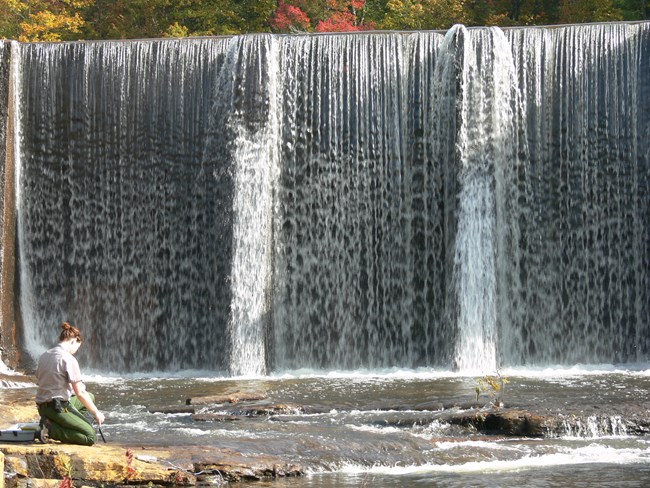
NPS Photo
Little River Canyon National Preserve's 15,000 acre preserve protects the nation's longest mountaintop river, which flows for almost its entire length down the middle of Lookout Mountain in northeast Alabama. The free-flowing Little River is one of the cleanest, wildest waterways in the South and its canyons are some of the deepest (183 meters or 600 feet) in the Southeast. This is the newest park unit in the network, being authorized in 1992.
The Cumberland Piedmont Network I&M program has provided this park with a vegetation community classification and map, a wetlands inventory, and updated vascular plant and vertebrate species lists. During the vegetation community classification work, 27 distinct associations were documented and mapped, including a globally rare wetland type, the Southern Appalachian Low Mountain Seepage Bog.
The network monitoring program at this park includes four vital signs that involve repeated visits to established sites, following procedures established by each monitoring protocol. These four vital signs are: forest vegetation communities, invasive species early detection, ozone/foliar injury, and water quality. Water quality monitoring began in 2007 and continues on a monthly schedule for two years "on," five years "off,"at eleven sites. Forest monitoring began in 2011–2012 with the establishment of 16 long-term monitoring plots. Additional plots will be established in upcoming years, followed by a five-year revisit schedule occurring in mid-May. Ozone levels and foliar injury are assessed on-site every six years, beginning in 2011. The Invasive Species Early Detection protocol was completed in 2012 and will be used by field crews to monitor for priority exotics during their scheduled field work.
Park managers are using inventory and monitoring data to create resource stewardship strategies for achieving desired future conditions The links to inventory and monitoring reports are provided on this page.
For more Information contact:
Steve Thomas, Network Program Manager, CUPN offices at Mammoth Cave NP
Select a Park:
Select a Species Category (optional):
Visit NPSpecies for more comprehensive information and advanced search capability. Have a suggestion or comment on this list? Let us know.
Last updated: January 12, 2021
